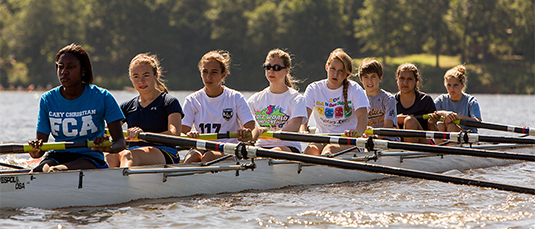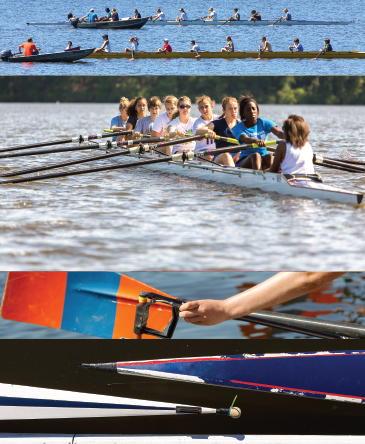Triangle Rowing Club builds skills for water & life
Four years ago, Brittany Hatt of Cary tagged along with a friend to Lake Wheeler for a little something called “crew,” unaware that the activity involves water, and is also called rowing.
Now Hatt is headed to the University of Tulsa this fall on a rowing scholarship. She figured things out thanks to the nonprofit Triangle Rowing Club, a competitive team open to middle- and high-schoolers ages 12 and older.
“Rowing is so cool!” said Hatt, who enjoys the sport’s physical and mental challenges. An off day, she notes, affects the entire boat.
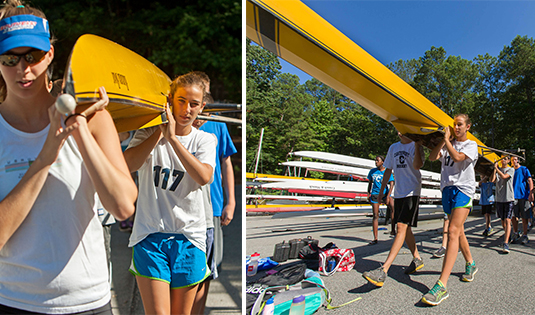
“Rowing is all about sportsmanship and teamwork,” she said. “You have to pull your own weight. Racing is the best and the worst; it hurts like crazy and you’re being yelled at by the coxswain. But then … there’s hearing the sound of a boat in sync.”
Some 50 area teens take part in the Triangle Rowing Club, learning to maneuver carbon fiber shells, aka boats, up to 60 feet long.
They respond to each day’s crew lineups and assignments, such as “take the single” (a narrow, one-person boat generally used only in summer by TRC) or “stroke the four,” referring to the stroke, or front, seat of the boat. This rower sets the pace and rhythm of the row, based on coaches’ instructions.
The kids are also responsible for carrying the boats to the lake, setting 30 to 50 pounds each on their shoulders.
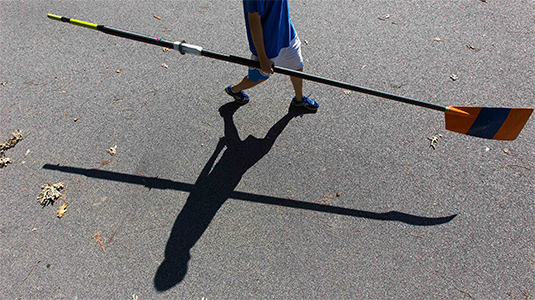
The shells have fun names like Banana Boat and Crunch ’n’ Munch, but varsity women’s coach Will White points out the physicality of rowing and its demanding practice schedule.
And yet, he says, most people who try it are hooked, and the sport is growing.
“Our team consisted of four squads: varsity men and women, plus novice men and women,” explained White, a former N.C. State rower and one of five TRC coaches. “In 2012 we added a fifth squad of middle-schoolers, who take part in at least one competition each season.”
The “ideal rower” is tall, to take the longest possible strokes, and fitness helps, but neither feature is required to start, he said.
“For our very first lesson, we use rowing machines on land. On day two, we set the boat and oars on the dock and practice strokes without leaving the dock,” White said. “Next we row in pairs for balance.

“There’s so much to learn, and how to take a stroke is a foreign concept,” he said. “It usually takes three weeks before all eight students can row at the same time.”
The styles taught here include sweep rowing, which requires two-handed pressure on one oar, and sculling, which uses two smaller oars per rower. Both are Olympic sports, although sculling is less competitive in the U.S.
The shells hold as many as eight rowers and a coxswain who steers, directs the crew and implements the coach’s race strategies.
TRC competes in eight regional regattas each year, and had three boats advance to the finals at the Southeast Regional Championships this past season: the Men’s Lightweight Four, Women’s Lightweight Double, and Women’s Varsity Four.
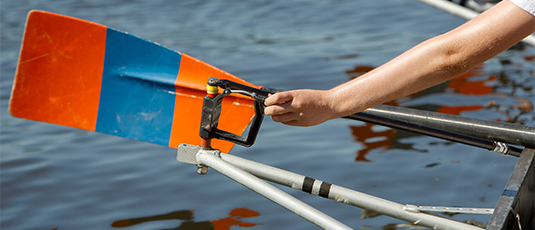
‘Too Far to Quit’
Clay Ashford, a rising sophomore at Athens Drive High, joined TRC at the end of seventh grade, looking to pick up a new sport.
He visited one of the club’s Sneak Peek Weeks — the next starts Aug. 19 — and found he liked being on the water.
(TRC also offers weeklong camps via the Summer Rowing Academy.)
“Now I love it,” Ashford said. “It fits with my personality; I don’t like giving up, and it strips you down when you’re working that hard. This sport is about mental toughness.”
Ashford says he was a “scrawny kid” when he started rowing, and is now more fit; he thinks rowing rhythms even help his performance in his school’s marching band.
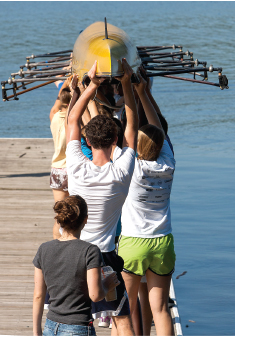 Teens enrolled in the Triangle Rowing Club summer program carry a 60-foot boat to the water.
Teens enrolled in the Triangle Rowing Club summer program carry a 60-foot boat to the water.
He especially likes the competiveness of regattas.
“The toughest part is about two-thirds of the way into a piece, when I know I still have this much to go and I can’t speed up or push too fast. It’s the point where I’ve gone long enough to feel awful, but too far to quit,” Ashford said.
“But when I’m done it feels amazing, like I can do anything.”
Being with the team is a bonding experience, Ashford says, and rowing has put him in touch with his own mind.
“It’s all-out to the world,” he said. “It’s a true and pure experience, and you can’t hide.”
White says the skills learned on the water also extend onto land.
“There’s a lot of responsibility,” he said. “These kids are at practice by 3:30 p.m., four days a week, plus early morning on Saturdays. At regattas, we hold them responsible to get up, arrive on time, and get their squad together. The upperclassmen step up to help the younger. It’s self-sufficiency. You can really watch the character development.
“And our team goal is always to go to the national championships,” he added. “We were two seconds off this year, but we have a serious shot in the spring. That teaches the kids a lot about how much work we need to do daily.”
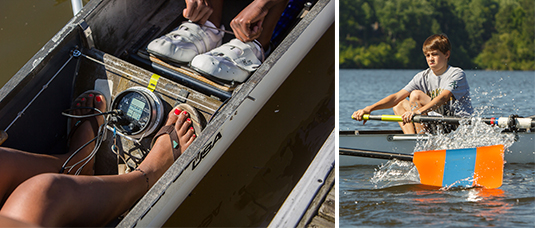
White also credits TRC’s parent board for behind-the-scenes assistance and fundraising for the nonprofit, to keep up with equipment and program needs.
From muscles to aerobics to life lessons, rowing can be a lifetime sport.
Hatt aspires to become a surgeon, but “I will get myself a boat, and keep rowing!” she said.
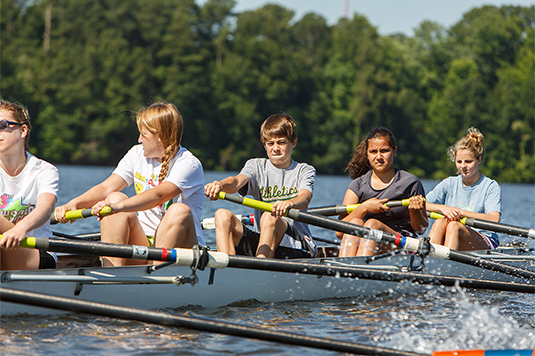
Editor’s note: Triangle Rowing Club varsity rower Claire Prevost has signed with Clemson University to row with its women’s team beginning this fall.
Triangle Rowing Club
trianglerowing.org
